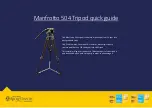
Wiring
Promag 50
56
Hauser
4.4
Degree of protection
The devices meet all the requirements of IP 67 degree of protection.
Compliance with the following points is mandatory following installation in the field or servicing in
order to ensure that IP 67 protection is maintained:
• The housing seals must be clean and undamaged when inserted into their grooves. The seals must
be dried, cleaned or replaced if necessary.
• All threaded fasteners and screw covers must be firmly tightened.
• The cables used for connection must be of the specified outside diameter
• Firmly tighten the cable entries.
• The cables must loop down before they enter the cable entries ("water trap"). This arrangement
prevents moisture penetrating the entry. Always install the measuring device in such a way that
the cable entries do not point up.
• Remove all unused cable entries and insert plugs instead.
• Do not remove the grommet from the cable entry.
a0001914
Fig. 46:
Installation instructions, cable entries
"
Caution!
Do not loosen the threaded fasteners of the sensor housing, as otherwise the degree of protection
guaranteed by Hauser no longer applies.
!
Note!
The Promag L, Promag W and Promag P sensors can be supplied with IP 68 rating (permanent
immersion in water to a depth of 3 meters (10 ft)). In this case the transmitter must be installed
remote from the sensor.
The Promag L sensors with IP 68 rating are only available with stainless steel flanges.
When using the measuring device in a:
• Pipe with a cathodic protection unit
The device is installed potential-free in the pipe.
Only the two flanges of the pipe are connected with a ground
cable (copper wire, 6 mm² (0.0093 in
)). Here, the ground cable
is mounted directly on the conductive flange coating with flange
screws.
Note the following when installing:
• The applicable regulations regarding potential-free installation
must be observed.
• There should be
no
electrically conductive connection
between the pipe and the device.
• The mounting material must withstand the applicable
torques.
A0011896
Fig. 45:
Potential equalization and cathodic
protection
1
Power supply isolation transformer
2
Electrically isolated
Operating conditions
Potential equalization
1
2
2
a
b















































